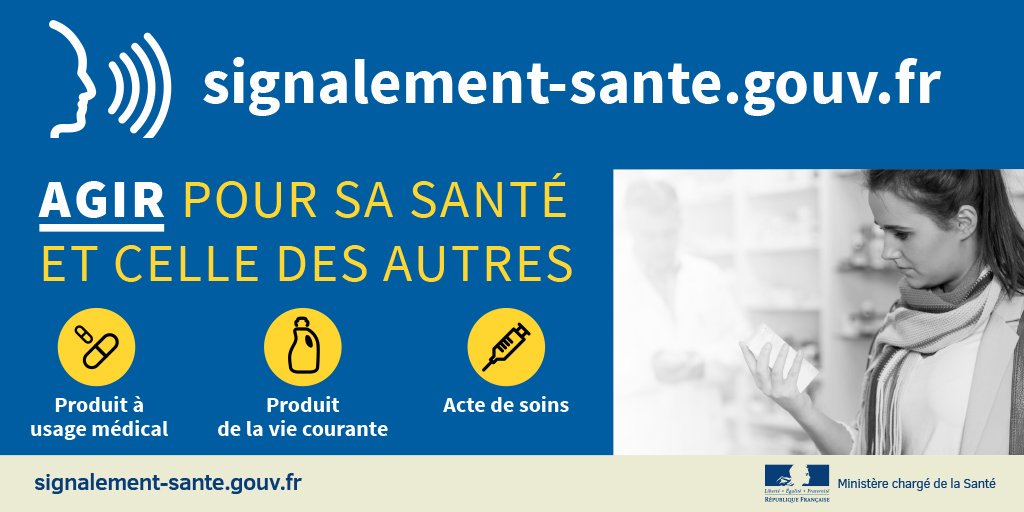Marco V. Corniola 1,2,3,4
Received: January 7, 2022 / Acceptance: January 17 2022
© The Author (s), under exclusive to sprigner-verlag gmbH austria, part of Springer Nature 202222
It is increasingly obvious that many questions remain unanswered when it comes to assessing the extent of resection in meningioma surgery, mainly because intracranial meningiomas are much more than arachnoid warts and complex histological and biomolecular mechanisms play a role in their genesis and their recurrence.
In a recent article entitled: "proposition of a new grading system for meningioma resection: The Copenhagen Protocol", Haslund-Vinding et al. suggest an objective and simple classification system based on microscopic analyzes of resection margins as well as on the digitization of Dotatoc TEP [4]. We can hope that this is the promise of better days in understanding and prognosis of intracranial meningomes, in accordance with other emerging techniques involving DNA methylation analysis [12, 14, 15], which are the basis of new classification systems [15]. It is certain that times (and paradigms!) Change in the field of evaluation and in the prognosis of intracranial meningiomas.
The current management of intra-cranial meningiomas is based on the data provided by Simpson in the late 1950s . At that time, Simpson recovered the estimate of the extent of the resection of meningiomas based on the results of the operation [18]. Major progress has since been made : the implementation of the surgical microscope and the advent of precise and dedicated imaging methods [10]. Surprisingly, none of them has been powerful enough to allow the emergence of new surgical classifications and, by extension, to improve the prognosis in terms of tumor recurrence and histological transformation.
In a recent publication entitled "The Simpson Grade: Abandonment of the scale but preserve the message", Schwartz and McDermott discuss the concept of grade 0 of Simpson, that is to say the existence of tumor satellite tumor piles [16]. The presence of clusters, their identification by the new imaging methods and their taking into account in surgical planning shows how the extent of resection is the golden rule of meningioma surgery.
While histologically benign meningiomas can behave clinically aggressive due to their location, a coarse total resection is carried out in most Lesions of Grade I of WHO [5, 8]. The problem arises when masked tumors of Grade I of the WHO can escape our vigilance [2]. In these cases, the biomarkers associated with the tumor classification (Ki-67/MIB-1, SMARCE1, BAP1, KLF4/Traf7) as well as the profiling of methyloma must be taken into account [3, 9, 11, 12, 14, 17], which shows that surgery does not solve the whole equation alone.
The "problem" of most meningiomas is their benign profile, forgiving (temporarily) to the surgeon each time an incomplete resection is made and sometimes resulting in recurrences (up to 20%) in the medium and long term [1, 20]. These late recurrences made the neurosururge students believe that, whatever the extent of resection, meningiomas have the potential to recur [7]. However, we have shown that in a very large cohort, whenever the extent of resection was high and documented radiologically, recurrence rates were reduced and age remains the only predictor of the reappearance of the tumor [7]. The problem is more complex with the intermediate grade lesions to be raised, where recurrence is the result of a complex process involving the biology and the location of the tumor, the extent of surgical resection and the characteristics of the patients. Recently, Soni and Al [19] once again confirmed and demonstrated that the extent of resection was essential to increase the overall postoperative survival of patients with intermediate grade meningiomas. In the same vein, Rydzewski et al. [13] were able to show that total resection and adjuvant radiotherapy were associated with improving survival in patients with atypical meningiomas and that they were independent predictors of global survival. They also showed that total macroscopic resection was associated with a lower probability of receiving radiotherapy.
Achieving a maximum extent of resection is still part of the meningiomal management arsenal [5, 10]. The challenge will always be the same: reduce the tumor load to decrease as much as possible the risk of recidivism or malignant degeneration safely [6, 10], but this should never prevent the implementation of new imaging methods or new treatments.
In a brief communication commenting on the publication of Haslund-Vindings, our estimated colleague Atur Goël says that "the recidivism rate of a meningioma is independent of the extent of tumor resection" [4]. This statement is questionable, especially in the light of the new classification and gradation tools discussed above.
The commentary by Atul Goël, suggesting that a meningioma remains a meningioma and that surgery is and will remain the only valid treatment, without being able to be more precise in the identification and stratification of patients at risk, therefore seems unidimensional. Staying simplistic and binary is the guarantee of stagnation in the management of meningiomas and the depressing promise of a perpetual debate between conservatives and progressives.
References
- Adegbite AB, Khan Mi, Paine KW, Tan LK (1983) The Reverse of Intracranial Meningiomas After Suratment. J Neurosurg 58: 51–56. https: // doi. Org/ 10. 3171/ DNS. 1983. 58.1. 0051
- Corniola MV, Lemée JM, Meling Tr (2020) Histological Transformation in Re recurrent who grade i meningiomas. SCI REP 10: 11220. https: // doi. Org/ 10. 1038/ S41598- 020- 68177-X
- Gauchotte G, Peyre M, Pouget C, Cazals-Hatem D, Polivka M, Rech F, Varlet P, Loiseau H, Lacomme S, Mokhtari K, Kalamarides M, Bielle F (2020) Progostic Value of Histopathological Features and Loss of H3K27ME3 Immunolabeling in Anaplastic Meningioma: Retrospective Study. J Neuropathol Exp neurol 79: 754–762. https: // doi. Org/ 10. 1093/ JNEN/ NLAA0 38
- Haslund-Vinding J, Skjoth-Rasmussen J, Poulsgaard L, Fugleholm K, Mirian C, Maier Ad, Santarius T, Rom Poulsen F, Meling T, Bartek JJ, Forander P, Larsen VA, Kristensen Bw, Scheie D, Law I, Ziebell M, Mathiesen T (2021) System for Meningioma Resection: The Copenhagen Protocol. Acta Neurochir (Wien). https: // doi. Org/ 10. 1007/ S00701- 021- 05025-5
- Hasseleid BF, MELING TR, RONNING P, SCHE D, HELSETH E (2012) Surgery for Convexity Meningioma: Simpson Grade I Resection As the Goal: Clinical Article. J Neurosurg 117: 999–1006. https: // doi.org/ 10. 3171/ 2012.9. JNS12 294
- Lemee JM, Corniola MV, Da Broi M, Joswig H, Scheie D, Schaller K, Helseth E, Meling Tr (2019) Extient of Resection in Meningioma: Predictive factors and clinical implications. SCI REP 9: 5944. https: // doi. Org/ 10. 1038/ S41598- 019- 42451-Z
- Lemée JM, Corniola MV, Meling Tr (2020) BENEFITS OF RE-DO Surgery for Intracranial Meningiomas. SCI REP 10: 303. https: // doi. Org/ 10. 1038/ S41598- 019- 57254-5
- Lemée JM, Joswig H, Da Broi M, Corniola MV, Scheie D, Schaller K, Helseth E, Meling Tr (2020) Who Grade I Meningiomas: Classification-Three for Prognostic Factors of Survival. Neurosurg Rev 43: 749–758. https: // doi. Org/ 10. 1007/ S10143- 019- 01117-0
- LI J, Liang R, Song C, Xiang Y, Liu Y (2019) Prognostic Value of Ki-67/MIB-1 Expression in Meningioma Patients: A Meta-Analysis. Criting revised EKARYOT Gene Expr 29: 141–150. https: // doi. Org/ 10.1615/ CRATR Eveuk Aryot genee XPR. 20190 25430
- MELING TR, DA BROI M, Scheie D, Helseth E, Smoll NR (2019) Meningioma Surgery—Are We Making Progress? World Neurosurg 125: E205–E213. https: // doi. Org/ 10. 1016/ d. Wneu. 2019. 01. 042
- Nassiri F, Mamatjan Y, Suppiah S, Badhiwala JH, Mansouri S, Karimi S, Saarela O, Poisson L, Gepfner-Tuma I, Schittenhelm J, Ng HK, Noushmehr H, Harter P, Baumgarten P, Weller M, Preusser M, Herold-Mende C, Tatagi M, Tabatabai G, Sahm F, von Deimling A, International Consortium on Meningiomas, Zadeh G, Aldape KD (2019) DNA Methylation Professation to Predict Risk in Meningioma: Development and Validation of A Nomogram to Optimize Clinical Management. Neuro Oncol 21 (901): 910. https: // doi. Org/ 10. 1093/ Neuonc/ Noz061
- Panagopoulos I, Gorunova L, Leske H, Niehusmann P, Johannesen Le, Staurseth J, Oino N, Meling Tr, Heim S, Micci F, Brandal P (2018) Pyrosequencing Analysis of MGMT promoter Methylation in Meningioma. Cancer Genomics Proteomics 15: 379–385. https: // doi. Org/ 10. 21873/ CGP. 20096
- Rydzewski NR, Lesniak MS, Chandler JP, Kalaurakal JA, Pollom E, Tate MC, Bloch O, Kruser T, Dalal P, Sachdev S (2018) Gross Total Resection and Adjuvant Radiotherapy Most Meaning Predictors of Implved Survival in patients with atypical meningioma. Cancer 124: 734–742. https: // doi. Org/ 10. 1002/ CNCR. 31088
- Sahm F, Schrimpf D, Olar A, Koelsche C, Reuss D, Bissel J, Kratz A, Capper D, Schefzyk S, Hielscher T, Wang Q, Sulman Ep, Adeberg S, Koch A, Okuducu AF, Brehmer S, Schittenhelm J, Becker A, Brokinkel B, Schmidt M, Gousias K, Kessler AF, Lamszus K, Debus J, Mawrin C, Kim Yj, Simon M, Ketter R, Paulus W, Aldape KD, Herold-Mende C, Von Deimling A (2016) Tert Promote Mutations and Risk Of Reveaire in Meningioma.j Natl Cancer INST 108. HTTPS: // DOI. Org/ 10. 1093/ JNCI/ DJV377
- Sahm F, Schrimpf D, Stichel D, Jones DTW, HielScher T, Schefzyk S, Okonechnikov K, Koelsche C, Reuss de, Capper D, Sturm D, Wirsching Hg, Berghoff AS, Baumgarten P, Kratz A, Huang K, Wefers Ak, Hovestadt V, Sill M, Kurian km, okuducu AF, Jungk C, Drueschler K, Schick M, Bewerunge- Hudler M, Mawrin C, Seizz-omenhagn M, Ketter R, Simon M, Westphal M, Lamszus K, Becker A, Koch A, Schittenhelm J, Rushing EJ, Collins VP, Brehmer S, M, Hanggi D, Unterberg A, Paulus W, Wick W, Pfister SM, Mittelbronn M, Preusser M, Herold-Mende C, Weller M, Von Deimling A (2017) DNA Methylation-Based Classification and Grading System for Meningioma: Multicenter, Retrospective Analysis. Lancet Oncol 18: 682–694. https: // doi. Org/ 10. 1016/ S1470- 2045 (17) 30155-9
- SCHWARTZ TH, McDermott MW (2020) The Simpson Grade: Abandon the Scale But Prese the message. J neurosurg: 1–8. https: // doi. Org/ 10. 3171/ 2020.6. JNS20 1904
- Sievers P, HielScher T, Schrimpf D, Stichel D, Reuss de, Berghoff as, Neidert Mc, Wirsching HG, Mawrin C, Ketter R, Paulus W, Reifenberger G, Lamszus K, Westphal M, Etminan N, Ratliff M, Herold-Mende C, Pfister SM, Jones DTW, Weller M, Wick W, Preusser M, von Deimling A, Sahm F (2020) CDKN2A/B homozygous deletion is associated with earning in meningiomas. Acta Neuropathol 140: 409–413. https: // doi. Org/ 10. 1007/ S00401- 020- 02188-W
- Simpson D (1957) The Reverse of Intracranial Meningiomas After Surgical Treatment. J neurol neurosurg Psychiatry 20: 22–39. https: // doi. Org/ 10. 1136/ JNNP. 20.1. 22
- Soni P, Davison Ma, Shao J, Momin A, Lopez D, Angelov L, Barnett GH, Lee JH, Mohammadi AM, Kshettry VR, Recinos PF (2021) Extent of Resection and Survival outcomes in World Health Organization Grade II Meningiomas. J Neurooncol 151: 173–179. https: // doi. Org/ 10. 1007/ S11060- 020-03632-3
- VASS km, Spille DC, Sauerland C, Suero Molina E, Brokinkel C, Paulus W, Stummer W, Holling M, Jeibmann A, Brokinkel B (2017) The Simpson Grading in Meningioma Surgery: Does The Tumor Location Influence The Prognostic Value? J Neurooncol 133: 641–651. https: // doi. Org/ 10. 1007/ S11060- 017- 2481-1
Publisher's Note Springer Nature Remains Neutral With Regard to Jurisdictional Claims in Published Maps and Institutional Affiliations.





